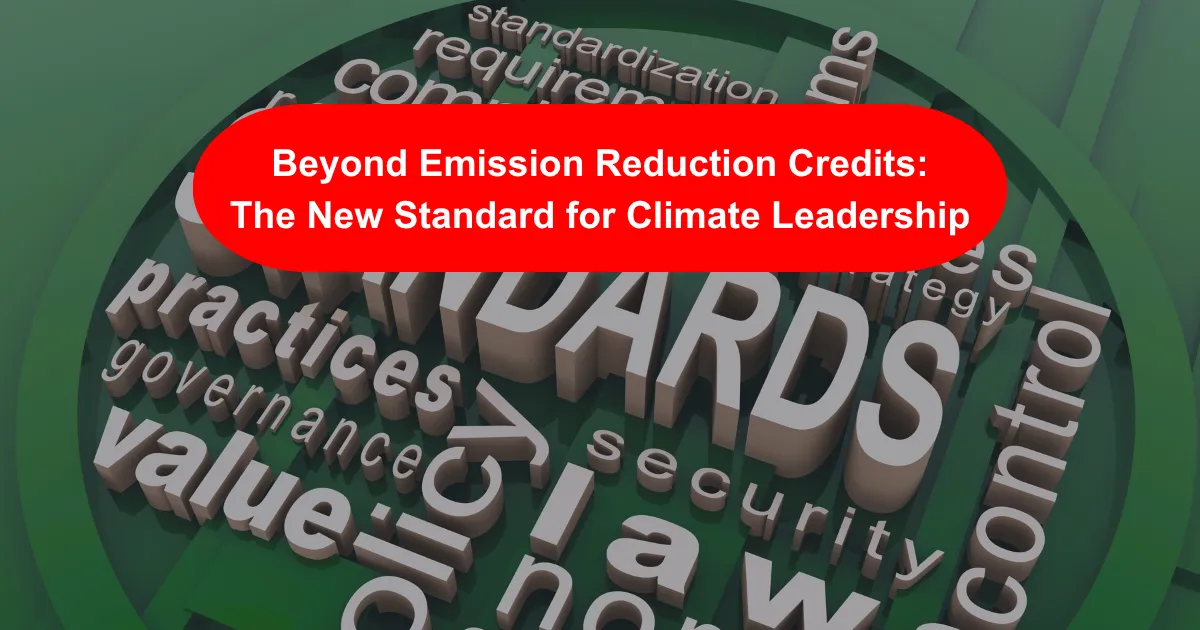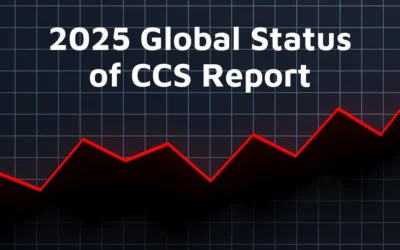Emily Dakoske
In the C-suite of every global enterprise, a new reality has taken hold. The mandate for sustainability is no longer a soft-edged request from the marketing department; it’s a hard-line item from the board, a non-negotiable demand from investors, and a deciding factor for top talent. For Chief Sustainability Officers, the pressure is immense. You are tasked not just with navigating a labyrinth of regulations, but with charting a course toward a genuine, defensible net-zero future.
For decades, a key tool in this navigation has been the Emission Reduction Credit, or ERC. These credits, born from regulatory frameworks like the Clean Air Act, have been the bedrock of compliance strategies. They are the established, government-sanctioned instruments for balancing the scales of industrial emissions.
The Foundation: What Exactly Are Emission Reduction Credits?
To understand where the market is going, we must first acknowledge its foundation. Emission Reduction Credits are, in essence, a regulatory asset. As defined by governing bodies like the Environmental Protection Agency (EPA), an ERC is generated when a facility reduces its emissions to a level below what is legally required.
Think of it as an industrial “permission slip.” A company that over-performs on its emission reduction targets can bank or sell these credits to another company that needs to offset its own emissions to meet regulatory thresholds. It’s a closed-loop system designed to maintain air quality standards within a specific region. And for that purpose, it works.
But for a forward-thinking global corporation, this is where the story begins, not where it ends. The limitations of a compliance-only strategy are becoming a significant business risk.
The Leadership Gap: Why Compliance Isn’t Enough
Relying solely on traditional ERCs to build a corporate climate strategy is like trying to win a Grand Prix by only following the speed limit. You might avoid a ticket, but you will never reach the podium. The strategy is fraught with risks that savvy stakeholders are quick to identify.
The most prominent risk is greenwashing. In a world demanding tangible action, claiming climate leadership based on credits that merely shuffle existing emissions obligations is a fragile position. As the Organization for Economic Co-operation and Development (OECD) warns, unsubstantiated or misleading environmental claims erode consumer trust and invite regulatory scrutiny.
The technical challenge lies in a crucial principle: Additionality. A carbon credit is only truly impactful if it represents an environmental benefit that would not have happened otherwise. Many ERCs, while valid for compliance, are generated from actions a company might have taken anyway for economic or operational reasons. They don’t always add a new, net-negative contribution to the global carbon balance.
Investors, customers, and employees understand this distinction. They are no longer satisfied with a strategy of avoidance. They are demanding proof of removal—the active, permanent, and verifiable extraction of carbon dioxide from the atmosphere.
The Future is Removal: Shifting to High-Integrity Credits
This is where true climate leaders are turning their attention. The conversation is pivoting from reduction to removal, from compliance to consequence. The new gold standard is the high-integrity carbon removal credit, an instrument built not on regulatory loopholes, but on undeniable scientific impact.
Unlike an ERC, which represents a ton of pollution not emitted into the air, a carbon removal credit represents a ton of CO2 physically pulled out of the air and durably stored away. This shift is guided by three non-negotiable principles:
Radical Additionality:
The carbon removal is a direct result of the credit purchase. Without the project, the carbon would remain in the atmosphere.
Unquestionable Permanence:
The captured carbon is sequestered for centuries, not just for a single growing season. It is taken off the board for good.
Verifiable Transparency:
Every ton of CO2 removed is rigorously measured, monitored, and verified by independent third parties. Advanced tools, like blockchain-based registries, are making this process more transparent than ever before.
This isn’t just an offset. It’s a holistic solution that creates a powerful, positive story of ecological and community restoration—a story that resonates far more deeply than a compliance certificate.
A Vision for Corporate Climate Action
“For too long, the conversation around corporate climate action has been anchored in obligation,” notes Beau Parmenter, a key visionary behind Dynamic Carbon Credits. “We’re seeing a seismic shift. The most innovative companies are no longer asking, ‘What must we do to comply?’ They’re asking, ‘What can we do to lead?’ They see high-integrity carbon removal not as a cost, but as an investment in their brand, their resilience, and their relationship with the world.”
To visualize this shift, consider the two paths:
Path 1: The Compliance Strategy (ERC)
- Action: Purchase a credit from a factory that upgraded its scrubbers.
- Result: A localized emission is avoided. A regulatory box is checked.
- Narrative: “We met our legal requirements.”
Path 2: The Leadership Strategy (High-Integrity Removal)
- Action: Invest in a biochar project that converts farm waste into stable carbon.
- Result: Atmospheric CO2 is permanently removed and stored. Soil health improves, supporting farmers and food security.
- Narrative: “We are actively rebuilding ecosystems and investing in the communities we serve while permanently removing our carbon footprint.”
The difference in impact—and in storytelling—is profound.
Don’t Just Meet the Standard. Set It.
The landscape of corporate responsibility has been redrawn. Emission Reduction Credits have a role to play in the complex machinery of environmental regulation. But they are a tool of the past, designed for a world that was just beginning to grapple with its carbon problem.
Today, the challenge and the opportunity are infinitely greater. Your company’s climate legacy is being written in real-time with every strategic decision you make. The choice is clear: you can write a story of quiet compliance, or you can author a bold narrative of market-defining leadership.
Your stakeholders are waiting to see which path you choose.






